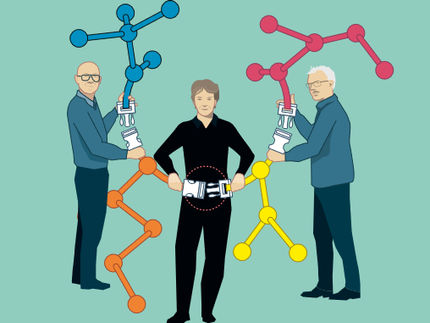Click, click, boom—150 new molecules within days instead of months
A new study calls accelerated SuFEx click chemistry “a robust platform for drug discovery”
Cold Spring Harbor Laboratory (CSHL) chemists have created a new collection of molecular compounds and begun testing them as potential leads in the search for new drugs. Among these molecules, they found several that show promise for development as antibiotics and cancer therapies. Sounds like a eureka moment? Well, sort of. But it’s more a case of hard chemistry made simple.
The new compounds were synthesized using an efficient new way of linking molecules together, developed in the lab of CSHL Professor John Moses. Moses calls his innovative process Accelerated SuFEx Click Chemistry (ASCC). It’s one of the latest advances in the Nobel-winning field of click chemistry, pioneered by Moses’ mentor K. Barry Sharpless.
Click chemistry quickly snaps together molecules to create complex new structures. This enables drug developers to assemble large numbers of compounds for further exploration. With Accelerated SuFEx, click chemistry can generate more compounds in fewer steps and with higher yields.
“If you can make molecules, you can test them,” Moses explains. “And with this technology, you can make them fast.”
Moses and his team used ASCC to create more than 150 individual new compounds, including derivatives of complex natural molecules. In the past, it might have taken months to generate and purify such an assortment of molecules. Moses and his team had them ready within days. They then tested these new molecules on cancer cells and drug-resistant strains of bacteria.
In one set of experiments, Joshua Homer, a research investigator in Moses’ lab, synthesized an array of molecules that were similar to an anti-cancer compound called combretastatin A4. Homer found that two of the new molecules could kill cancer cells that typically resist standard chemotherapy. These molecules could someday lead to a solution for difficult-to-treat types of breast and pancreatic cancers.
The researchers also created molecules that resembled an antibiotic called dapsone. They saw that some of these molecules were effective against dapsone-resistant bacteria. Homer says ASCC could help chemists reengineer other complex antibiotics to overcome pathogens’ hardened defenses.
Looking ahead, Moses and his team will continue to use ASCC to explore new horizons of drug discovery and fine-tune their leads into potential drug candidates. Meanwhile, they hope other researchers will also introduce Accelerated SuFEx technology to their own drug discovery platforms.
Summing up the advantages of ASCC, Moses says, “It’s just a way to find function. You can always improve things and optimize. But let’s get there as quick as possible. Hopefully, we can accelerate the whole process.”
Original publication
Other news from the department science

Get the life science industry in your inbox
By submitting this form you agree that LUMITOS AG will send you the newsletter(s) selected above by email. Your data will not be passed on to third parties. Your data will be stored and processed in accordance with our data protection regulations. LUMITOS may contact you by email for the purpose of advertising or market and opinion surveys. You can revoke your consent at any time without giving reasons to LUMITOS AG, Ernst-Augustin-Str. 2, 12489 Berlin, Germany or by e-mail at revoke@lumitos.com with effect for the future. In addition, each email contains a link to unsubscribe from the corresponding newsletter.























































